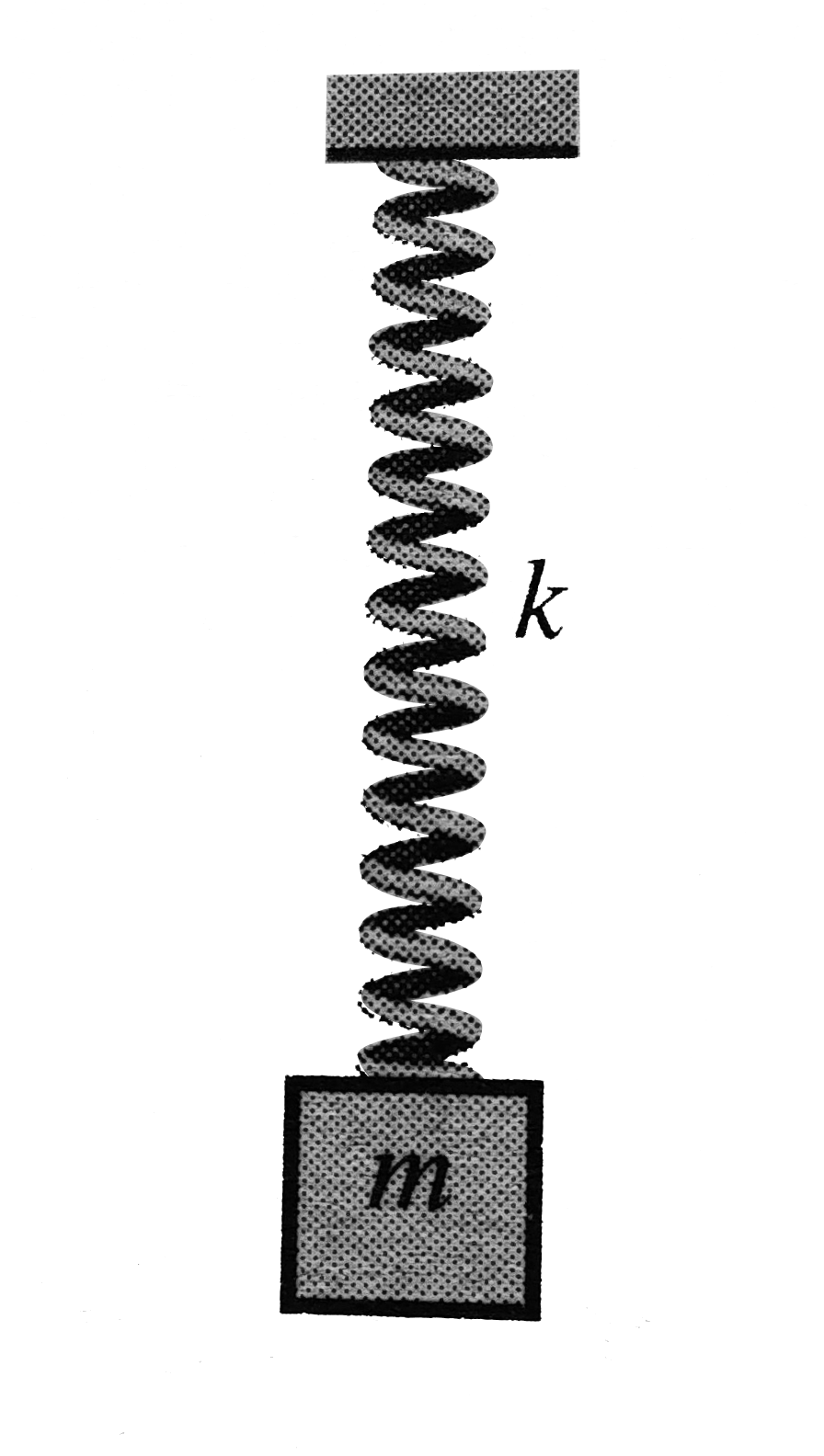A linear harmoinc oscillator of force constant 106Nm and amplitude 1cm has a total mechanical energy of 80j . The its maximum
potential energy is 50J
potential energy is 80J
kinetic eneregy is 80J
Kineteic energy is 50J
The correct Answer is:B, D
To solve the problem, we need to find the maximum potential energy (PE_max) and maximum kinetic energy (KE_max) of a linear harmonic oscillator given the force constant (k), amplitude (A), and total mechanical energy (E).
Given:
- Force constant, k=106N/m
- Amplitude, A=1cm=0.01m
- Total mechanical energy, E=80J
Step 1: Calculate Maximum Potential Energy (PE_max)
The maximum potential energy in a simple harmonic oscillator is equal to the total mechanical energy. Therefore, we have:
PEmax=E
Substituting the given total mechanical energy:
PEmax=80J
Step 2: Calculate Maximum Kinetic Energy (KE_max)
The maximum kinetic energy in a simple harmonic oscillator can be calculated using the relationship:
KEmax=E−PEmax
Since we already found PEmax=80J and the total mechanical energy is also 80J, we can substitute:
KEmax=E−PEmax=80J−80J=0J
Step 3: Verify with the formula for KE_max
Alternatively, we can calculate the maximum kinetic energy using the formula:
KEmax=12kA2
Substituting the values:
KEmax=12×106N/m×(0.01m)2
Calculating:
KEmax=12×106×0.0001=12×100=50J
Final Results:
- Maximum Potential Energy, PEmax=80J
- Maximum Kinetic Energy, KEmax=50J
Summary:
- Maximum Potential Energy: 80J
- Maximum Kinetic Energy: 50J
- Force constant, k=106N/m
- Amplitude, A=1cm=0.01m
- Total mechanical energy, E=80J
The maximum potential energy in a simple harmonic oscillator is equal to the total mechanical energy. Therefore, we have:
PEmax=E
Substituting the given total mechanical energy:
PEmax=80J
The maximum kinetic energy in a simple harmonic oscillator can be calculated using the relationship:
KEmax=E−PEmax
Since we already found PEmax=80J and the total mechanical energy is also 80J, we can substitute:
KEmax=E−PEmax=80J−80J=0J
Alternatively, we can calculate the maximum kinetic energy using the formula:
KEmax=12kA2
Substituting the values:
KEmax=12×106N/m×(0.01m)2
Calculating:
KEmax=12×106×0.0001=12×100=50J
- Maximum Potential Energy, PEmax=80J
- Maximum Kinetic Energy, KEmax=50J
- Maximum Potential Energy: 80J
- Maximum Kinetic Energy: 50J
Topper's Solved these Questions
- OSCILLATIONS BOOK - MODERN PUBLICATIONCHAPTER - OSCILLATIONS EXERCISE - Competition File (Multiple choice question) based on a given passage/comprehension
9 Videos
- OSCILLATIONS BOOK - MODERN PUBLICATIONCHAPTER - OSCILLATIONS EXERCISE - Competition File (Matching Type Questions)
2 Videos
- OSCILLATIONS BOOK - MODERN PUBLICATIONCHAPTER - OSCILLATIONS EXERCISE - Competition File (JEE (Advanced) For IIT Entrance)
7 Videos
- MOTION IN A STRAIGHT LINE BOOK - MODERN PUBLICATIONCHAPTER - MOTION IN A STRAIGHT LINE EXERCISE - CHAPTER PRACTICE TEST
16 Videos
- PHYSICAL WORLD BOOK - MODERN PUBLICATIONCHAPTER - PHYSICAL WORLD EXERCISE - Revision exercises (Long answer questions)
6 Videos
Similar Questions
A linear harmonic oscillator of force ocnstant 2×106N/m and amplitude 0.01 m has a total mechanical energy of 160J. What is the maximum K.E. and minimum P.E.?
View SolutionA harmonic oscillation of force constant 4×106Nm−1 and amplitude 0.01 m has total energy 240 J. What is maximum kinetic energy and minimum potential energy?
View Solution
Knowledge Check
A linear harmonic oscillator of force constant 106N/m and amplitude 2 cm has
Aa maximum P.E. of 100 JouleBa maximum K.E. of 150 JuleCa total energy of 200 JDa total energy of 300 JA linear harmonic oscillator of force constant 2×106N/m and amplitude 10 mm has a total mechanical energy is 160 J . Its
AMaximum potential energy is100JBMaximum kinetic energy is 100JCMaximum potential energy is160 JDMaximum potential energy is zero.A linear harmonic oscillator of force constant 2×106N/m and amplitude (0.01 m) has a total mechanical energy of (160 J). Its.
Amaximum potential energy is (100 J)Bmaximum kinetic energy is (100 J)Cmaximum potential energy is (160 J)Dmaximum potential energy is zero.
A linear harmonic oscilator of force constant 2×106N/m times and amplitude 0.01 m has a total mechanical energy of 160 Joules. Its
View SolutionA linear harmonic oscillator of force constant 2×106Nm−1 and amplitude 0.01m has a total mechanical energy 160J. Among the followinhg statement , which are correct?
i Maximum PEis 100J
ii Maximum KEis 100J
iii Maximum PE is 160J
iv Maximum PE is zero
View SolutionA linear harmonic oscillator of force constant 6×105 N/m and amplitude 4cm, has a total energy 600J. Select the correct statement.
View SolutionThe force constant of a simple harmonic oscillator is 3×106N/m, amplitude 0.02 m has a total energy of 1250 J
View Solution
For the spring pendulum shown in fig. the value of spring constant is 3×104Nm and amplitude of oscillation is 0.1m. The total mechanical energy of oscillating system is 200 J. Mark out the correct option (s).
View Solution
